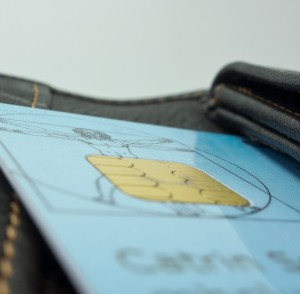 After years of rumors and discussion, EMV technology is finally coming to the U.S. in a big way.
After years of rumors and discussion, EMV technology is finally coming to the U.S. in a big way.
Recent large-scale data breaches among companies like Target and Home Depot are pushing credit and debit card issuers in America toward this new technology in a hurry. Restaurateurs need to be aware of how this will affect their shops – and what they can do to prepare.
What is EMV?
EMV is a global standard for securing electronic transactions that has been developed over the last two decades. Originally created by credit card giants Europay, MasterCard and Visa, the corporation that oversees EMV now includes American Express, Discover, JCB and China UnionPay.
The group has ushered in the worldwide use of “chip cards,” credit cards with a built-in computer chip. Unlike the magnetic stripe on traditional debit and credit cards, which contains unchanging information that can be accessed by counterfeiters, chip cards create a unique code for every transaction that cannot be duplicated or used again.
Three authentication methods work with the EMV chip – online PIN, offline PIN, and signature. A fourth method just uses the chip with no authentication, which is common for small purchases. EMV technology will not be able to prevent data breaches altogether, but it makes it much harder for criminals to profit from what they steal.
What EMV Adoption in America Means for Merchants
While increased security is great, the drawback to EMV is that every point of sale terminal and every ATM in America will have to be replaced with systems that can read chip cards.
For restaurants and other merchants, switching to EMV means upgrading in-store technology and internal processing systems, and complying with new liability rules. The chip-based cards also require that the card be inserted into a terminal throughout the entire transaction. In some ways, though, the decision to upgrade is already being made for us.
 Other countries have adopted the EMV technology quickly because of their own high fraud rates, which has driven counterfeiters to the U.S., where magnetic-stripe cards are still the norm. This has contributed to a doubling of domestic fraud cases over the past seven years.
Other countries have adopted the EMV technology quickly because of their own high fraud rates, which has driven counterfeiters to the U.S., where magnetic-stripe cards are still the norm. This has contributed to a doubling of domestic fraud cases over the past seven years.
While there is no mandate for merchants to switch to EMV, restaurateurs need to be aware of a shift in liability for American Express, Discover, MasterCard and Visa counterfeit card fraud.
For now, liability for any fraudulent card transaction rests with the issuer of the card. After October 2015, however, liability shifts to the merchant if the transaction is on a chip card that was read by a non-chip terminal. In other words, the merchant could be responsible for chargebacks, since liability generally falls on the party using the least secure technology. Many merchants are choosing to upgrade their card readers to avoid any potential risk.
Implementing EMV in Your Restaurant
Deciding when and how to implement EMV means measuring the cost of adoption against the potential liability of not having it. Your credit card processor can provide a better understanding of future liability risk.
To prepare your operation for EMV, Merchant Link has a list of questions to ask ahead of time:
- Will my business implement only chip-and-signature transactions, or do we want to use a chip-and-PIN system that requires paying at the table?
- How will the new solution impact my staff’s workflow? How many pay at the table terminals will I need? Where is the receipt printed? Do I need additional staff?
- If I am planning tablet POS for my waiters and I implement pay at the table, does the solution I pick deliver a separate payment device for the guest, or is it tied tightly to a waiter’s tablet?
- How will I train my staff on the new processes and procedures?
